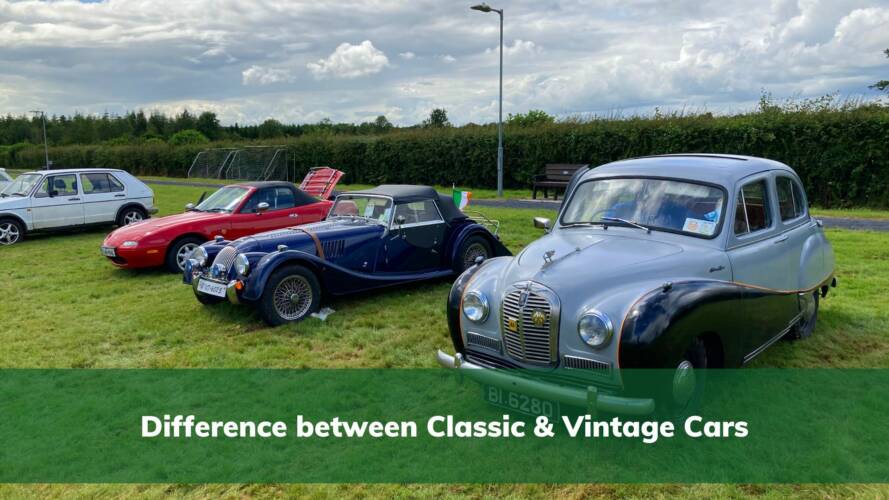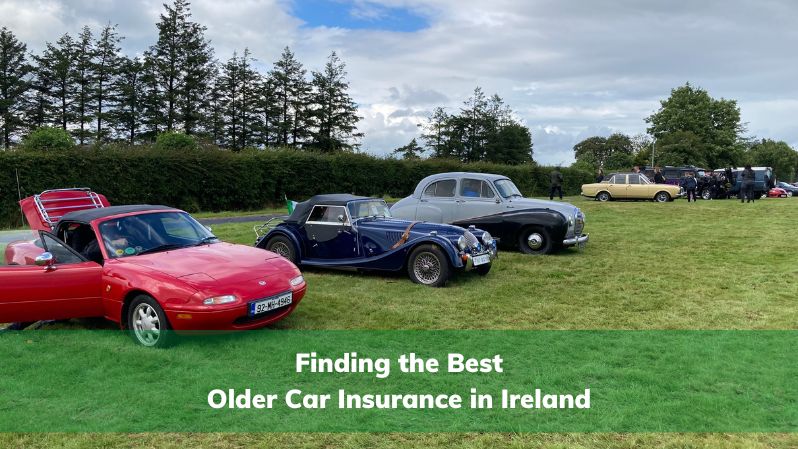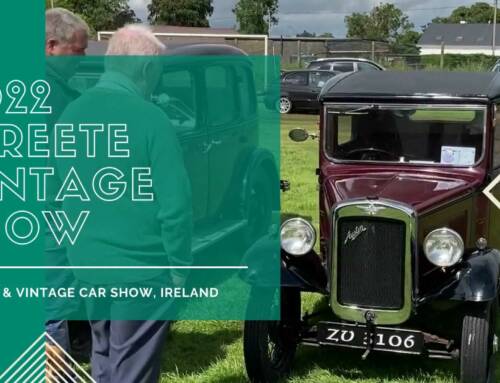The differences between classic and vintage cars are often confusing, to the point where the term classic car has different definitions for institutions, insurers, or clubs. At Insuremycars.ie, along with excellent classic car insurance, we’re trying to shed some light on these differences.
Older Car Classifications
There has always been some level of confusion around what precisely a classic car is, and what exactly sets it apart from vintage, antique and veteran cars. Nowadays, the term “classic” is used liberally to describe any older car that looks a bit out of place on our roads.
As many topics in the automotive industry, the definitions and differences when it comes about classic, vintage and veteran cars are hardly ever agreed upon. But, still, there is some consensus what the term classic car applies to: it’s usually vehicles that are over 20 years old. Furthermore, antique cars are generally the vehicles older than 45 years. That leaves a manufacturing time window for vintage cars between 1919 and 1930. Again, this is merely an attempt at classification of older cars.
Even if the motoring world would agree on these differences, other entities have their own criteria for the classification of classic and vintage cars. For instance, classic car insurance brokers will usually have their own definition, needed to determine insurance premiums and quotes. Moreover, governmental bodies and classic car clubs may have their own versions of defining classic, vintage or antiques cars. For example, a car build in 1980 or after could be labelled as collector car. And some really conservative car clubs could be defining classic cars as vehicles built strictly between 1915 and 1948.
According to Citizen information, a vintage vehicle for motor tax purposes is a vehicle that is 30 or more years old. In determining whether or not the vehicle qualifies for vintage status, the chassis number of the vehicle and the vehicle registration book or vehicle registration certificate must clearly display the age of the vehicle.
According to RSA’s vehicle standards for vintage vehicles: s vehicle becomes vintage 30 years after the date of first registration. For example, a vehicle first registered on 10 September 1988 became a vintage vehicle on 10 September 2018.
The Irish Veteran and Vintage Club is even more specific with the manufacturing year of the vehicle: antique – before 1905, veteran 1905-1918, vintage 1919-1930, post-vintage 1931-1945 and classic cars 1946-1987.
As you can see, it’s almost impossible to be on the same page when we’re talking about the differences between classic, vintage, antiques, and veteran cars.
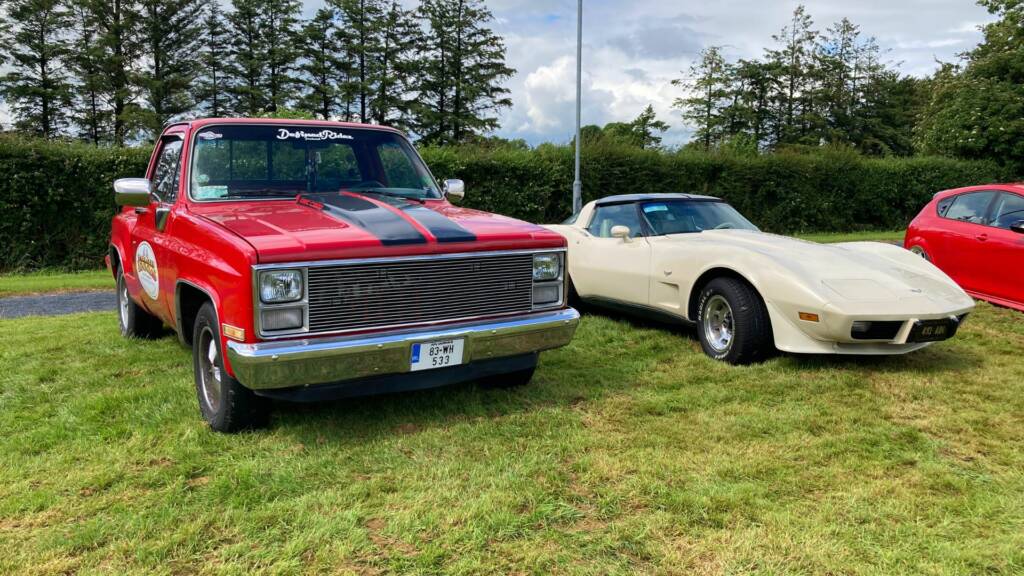
Classic Cars
Many car enthusiasts in Ireland love to collect older cars but often they may be wondering what cars do they actually have in the garage: classic, vintage or something else. For one of their cars to be considered a classic, it must be at least 20 years old, but not older than 40 years. Another criterion in some parts of the world is that a classic car should not be built before the year 1925.
Also, the purists will argue that a car is truly a classic only if its original design was not altered and the repairs and maintenance were done with respect to the factory form.
In conclusion, classic cars are 20+ years old vehicles used today for casual purposes like pleasure driving, restoration projects or vintage and classic car shows like the annual one we have in Streete. Given the manufacturing time frame for classic cars, this category will comprise mostly of sports cars and muscle cars, and that is easy to spot if you attend any classic car show. Thus, classic cars will usually have 6 or 7 speed manual transmission and will be faster a lot faster than vintage or antiques vehicles. Just to guide your imagination a little bit, some typical examples of the best classic cars would be a 1978 Chevrolet Camaro Z28 or a 1963 Mercedes-Benz 300SL Gullwing.
Vintage Cars
Today, a lot of people are mistaking vintage cars with modern cars that have a vintage look. As we mentioned above, actual vintage cars are those built between 1919 and 1930. Or at least that the general convention, although some would argue that the vintage era ended in 1925 for cars. Compared to classic car – and this is the big difference besides the age of the automobile – vintage cars still qualify as vintage even if modifications have been done to the vehicle or the factory settings were altered.
A more trivial difference between vintage and classic cars is that vintage cars will not be seeing a lot of time on the road. Finding one to buy is also much harder, mostly due to their limited volume, high price and the fact that traditional car dealerships don’t sell them. These vintage treasures make great car show exhibits and projects for restoration. Among the most popular vintage cars desired by collectors we’ll mention the iconic 1919 Ford Model T Sedan and the legendary 1930 Cadillac V-16.
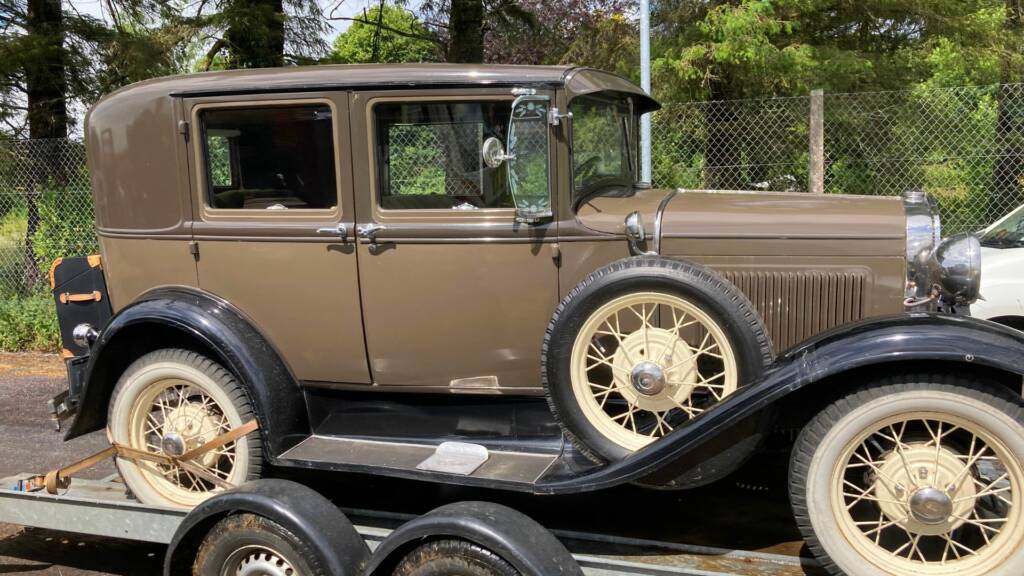
Antique Cars
Much like vintage cars, the antique vehicles are not generally purposed for pleasure drives but for restoration projects and car shows. This is easily understandable; we’re talking about 45+ years old cars and financial investments at the same time. It’s also worth mentioning that the antique cars category features the first ever built muscle cars, such as Chevrolet Camaro or Dodge Charger. Just to name a few iconic and popular antique cars: 1956 Porsche Speedster and 1938 Volkswagen Beetle.
Difference between Older Cars for Insurance
When it comes about insurance purposes in Ireland, vintage and classic cars will be classified in a slightly different way, depending on the following aspects: usage – this shows how often it’s used, because it has to a second car with occasional use and not a main everyday car; yearly mileage – has to be low, for example less than 5.000 km or 10.000 km; condition – the car needs to be well maintained and its condition has to be good but alterations are allowed if they improve the condition of the vehicle; age – this will differ a lot from insurer to insurer, some regard 15 years old card as classic, others only 25 years old.

